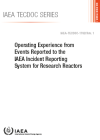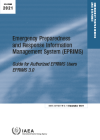The IAEA maintains the Incident and Emergency System to ensure that its Secretariat is prepared to respond in a timely, appropriate and efficient manner to any event that may have actual, potential or perceived radiological consequences to health, property or the environment.
Incident and Emergency System
The IAEA’s roles in response to nuclear and radiological incidents or emergencies are:
- Notification and official information exchange;
- Assessing potential emergency consequences and providing a prognosis of the possible progression of the emergency;
- Informing the public;
- On request, providing assistance; and
- Coordination of inter-agency response.
The IES covers the Secretariat’s emergency preparedness and response arrangements to nuclear and radiological incidents and emergencies regardless of whether they arise from accident, negligence or deliberate act.
The IAEA Incident and Emergency Centre serves as the Agency's focal point for emergency preparedness and response and as custodian of the IES. The IES includes on-call staff trained in various expert disciplines so that the initial response to any reported incident or emergency can be timely and adequate.
The IES can be promptly fully activated and operate in 24/7 full-response mode so that the Secretariat’s response is effective and commensurate with the nature and magnitude of an emergency. IES responders must fulfil annual training requirements that include classroom training, hands-on practice, and full-scale exercises that simulate nuclear or radiological incidents or emergencies. The IES Steering Group guides on matters of policy.
The IAEA Incident and Emergency Centre regularly conducts ‘full-response’ exercises within the IES, simulating an interaction with the Agency’s Member States. These exercises also help the IAEA gain practical experience, which is critical for it to continuously enhance its response capabilities.








